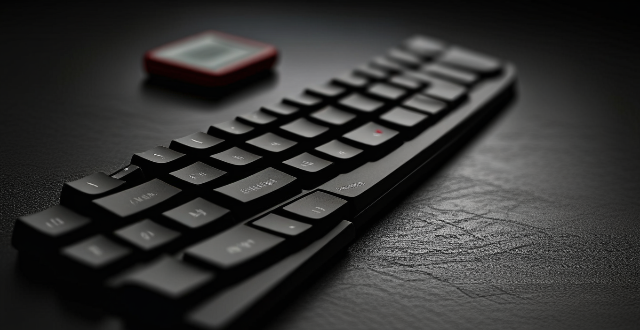The optimal keyboard layout for programming depends on personal preference, but there are key features that can make a significant difference, including ergonomics, programmability, keycaps and switches, and connectivity. Ergonomic considerations such as split keyboards, tenkeyless keyboards, and negative slope keyboards can reduce strain on your hands, wrists, and arms. Programmable options like macro keys, customizable hotkeys, and scriptable interfaces can improve your workflow and increase efficiency. Quality keycaps and switches, such as PBT keycaps and mechanical switches, can impact your programming experience by providing tactile feedback and durability. Connectivity options like wired, wireless, and Bluetooth connections offer different levels of reliability, flexibility, and portability. By selecting a keyboard that prioritizes comfort, efficiency, and customization, you can improve your coding experience and increase your productivity.

What is the Optimal Keyboard Layout for Programming?
When it comes to programming, having an efficient and comfortable keyboard layout can greatly enhance your productivity. The optimal keyboard layout for programming depends on personal preference, but there are some key features that can make a significant difference. In this response, we will explore the factors to consider when choosing a keyboard layout for programming and provide recommendations based on those factors.
Ergonomics
Ergonomics plays a crucial role in determining the optimal keyboard layout for programming. A comfortable and natural typing position helps reduce strain on your hands, wrists, and arms, which can lead to long-term health benefits. Here are some ergonomic considerations:
- Split Keyboards: Split keyboards allow you to place your hands in a more natural position, reducing the need to twist your wrists. They also provide more space for your hands, reducing crowding and increasing comfort.
- Tenkeyless Keyboards: Tenkeyless keyboards omit the number pad, allowing you to place the keyboard closer to your body and reducing the distance your hand has to travel to reach the mouse.
- Negative Slope Keyboards: Negative slope keyboards angle the keys downward, aligning them with the natural position of your fingers. This reduces strain on your wrists and allows for a more relaxed typing experience.
Programmability
Programmability is another important factor to consider when choosing a keyboard layout for programming. Having the ability to customize your keyboard layout can greatly improve your workflow and increase your efficiency. Here are some programmable options:
- Macro Keys: Macro keys allow you to assign complex sequences of keystrokes to a single key, saving time and reducing repetitive strain injuries.
- Customizable Hotkeys: Customizable hotkeys enable you to assign frequently used functions or commands to specific keys, making them easily accessible and improving your workflow.
- Scriptable Interfaces: Some keyboards come with scriptable interfaces that allow you to write custom scripts to automate tasks or create unique functionality.
Keycaps and Switches
The quality of keycaps and switches can also impact your programming experience. Here are some factors to consider:
- PBT Keycaps: PBT (Polybutylene Terephthalate) keycaps are durable and resist shine and wear, ensuring that your keyboard looks good over time.
- Mechanical Switches: Mechanical switches provide tactile feedback and a satisfying click sound, improving accuracy and reducing typos. They also tend to be more durable than membrane switches.
- Anti-Ghosting: Anti-ghosting technology ensures that each key press is registered accurately, even when multiple keys are pressed simultaneously. This is particularly useful for programming, where you may need to enter complex code quickly.
Connectivity
Finally, connectivity is an important factor to consider when choosing a keyboard layout for programming. Here are some options:
- Wired Connection: Wired connections provide a reliable and stable connection between your keyboard and computer, eliminating latency issues.
- Wireless Connection: Wireless connections offer greater flexibility and portability, allowing you to work from anywhere without being tethered to your computer.
- Bluetooth Connectivity: Bluetooth connectivity enables you to connect your keyboard to multiple devices simultaneously, making it easy to switch between different computers or mobile devices.
In conclusion, the optimal keyboard layout for programming depends on personal preference and specific needs. Considerations such as ergonomics, programmability, keycaps and switches, and connectivity should all be taken into account when choosing a keyboard layout that suits your requirements. By selecting a keyboard that prioritizes comfort, efficiency, and customization, you can improve your coding experience and increase your productivity.